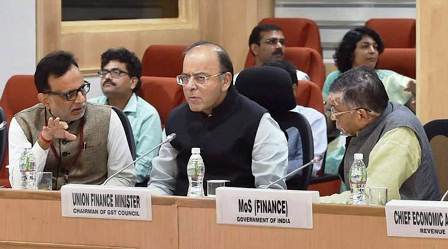
The 33rd GST council meeting began today to discuss the recommendations of a group of ministers. The focus of today’s meeting was to revise GST rates for under-construction real estate taxpayers.
However, according to Business Standard, the GST council on Wednesday 20th February deferred its decision on this matter till 24th February 2019.
GST Council deferred its decision on revising rates for under-construction real estate#GSTCouncil#RealEstatehttps://t.co/1ZxHF0wK17
— Business Standard (@bsindia) February 20, 2019
Earlier, The group of ministers favored lowering of GST rates on under-construction houses from 12 percent with an input tax credit to five percent without the input tax credit. Also, it has suggested reducing the rate for under-construction affordable houses to 3% without an input tax credit from 8 %.
However, the condition put on builders is to buy at least 80 percent of their inputs from the organized sector. Now, the taxpayers from this sector will have to wait till 24th i.e Sunday to see the final decision of GST council on this matter.
